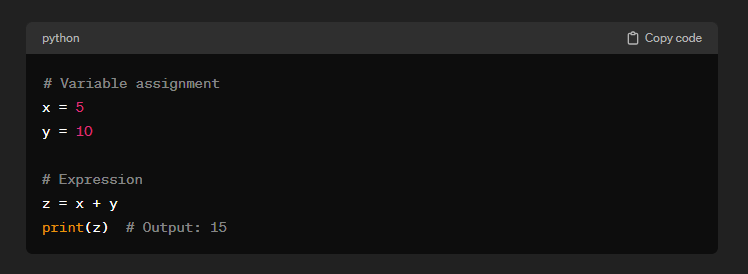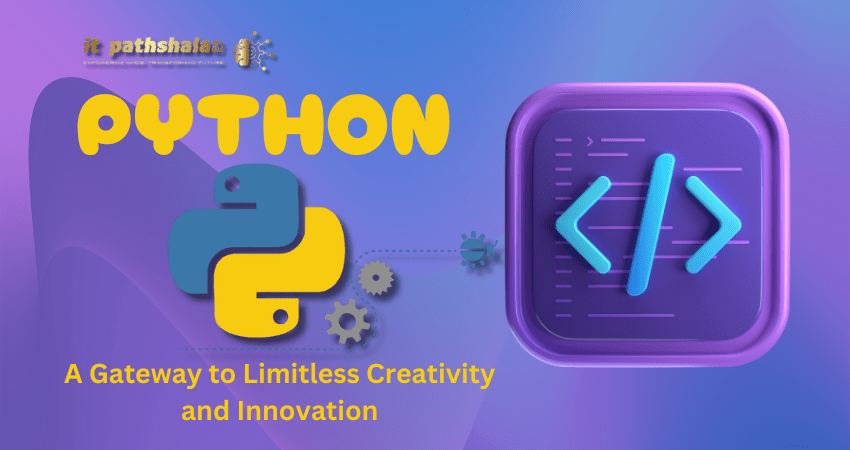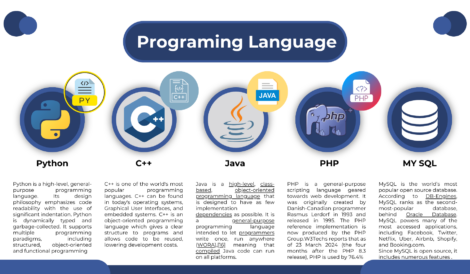In the vast landscape of programming languages, Python stands tall as a beacon of versatility and efficiency. With its simple syntax, extensive libraries, and widespread adoption, Python has become the go-to language for developers, data scientists, educators, and professionals across various industries. In this article, we’ll delve into the compelling reasons why learning Python is a smart choice, explore its diverse capabilities, and examine its current applications.
Why Learn Python?
- Ease of Learning: Python’s clean and readable syntax makes it accessible to beginners and seasoned developers alike. Its simplicity allows for rapid prototyping and encourages a focus on problem-solving rather than wrestling with complex syntax.
- Versatility: Python is a multipurpose language, capable of powering web development, data analysis, artificial intelligence, machine learning, automation, scientific computing, and more. Its versatility makes it indispensable across a wide range of domains.
- Abundant Libraries and Frameworks: Python boasts a rich ecosystem of libraries and frameworks, such as NumPy, Pandas, TensorFlow, Django, Flask, and SciPy, which expedite development and empower developers to tackle diverse challenges with ease.
- Community Support: The Python community is vibrant and welcoming, offering abundant resources, tutorials, forums, and open-source projects. Whether you’re a novice or an expert, there’s always something new to learn and contribute to in the Python community.
- Career Opportunities: Proficiency in Python opens doors to lucrative career opportunities in software development, data science, machine learning, cybersecurity, web development, and beyond. Many tech giants like Google, Facebook, Amazon, and Microsoft rely heavily on Python for their products and services.
What Python Can Do
- Web Development: Python’s web frameworks like Django and Flask facilitate the rapid development of scalable, secure, and feature-rich web applications. From simple blogs to complex enterprise solutions, Python powers a significant portion of the internet.
- Data Analysis and Visualization: Python, coupled with libraries like Pandas, NumPy, and Matplotlib, enables robust data analysis, manipulation, and visualization. Whether it’s processing large datasets or creating insightful visualizations, Python is the tool of choice for data scientists and analysts.
- Machine Learning and Artificial Intelligence: Python’s libraries, such as TensorFlow, Keras, and PyTorch, empower developers to build sophisticated machine learning models and AI applications. From image recognition to natural language processing, Python fuels groundbreaking innovations in AI.
- Automation: Python excels at automating repetitive tasks and streamlining workflows. Whether it’s scripting, task scheduling, or building bots, Python’s simplicity and versatility make it ideal for automation in various domains.
- Scientific Computing: Python’s scientific computing libraries like SciPy and SymPy make it indispensable for researchers and scientists. From numerical simulations to symbolic mathematics, Python accelerates scientific discoveries and innovations.
Current Applications of Python
- Web Development: Python frameworks like Django and Flask continue to dominate the web development landscape, powering websites and web applications for businesses of all sizes.
- Data Science and Analytics: Python remains the top choice for data scientists and analysts, driving insights and decision-making across industries ranging from finance and healthcare to marketing and e-commerce.
- Machine Learning and AI: Python’s robust ecosystem of machine learning and AI libraries fuels advancements in autonomous vehicles, virtual assistants, recommendation systems, and personalized user experiences.
- Automation and DevOps: Python scripts and tools play a crucial role in automating infrastructure management, deployment pipelines, and cloud orchestration, thereby enhancing efficiency and scalability in DevOps practices.
- Education: Python’s simplicity and versatility make it an ideal language for teaching programming concepts and fostering computational thinking in schools, universities, and coding boot camps worldwide.
In Python, the primary syntax typically starts with defining variables, followed by writing statements or expressions. Here’s a basic example:

As for the tools used for Python development, there are several popular ones:
- Integrated Development Environments (IDEs):
- PyCharm: A powerful IDE developed by JetBrains with features like code completion, debugging, and version control integration.
- Visual Studio Code (VSCode): A lightweight and versatile code editor with extensive Python support through extensions.
- Spyder: A MATLAB-like IDE primarily aimed at scientific computing and data analysis with built-in support for Python.
- Text Editors:
- Sublime Text: A highly customizable text editor with Python syntax highlighting and plugin support.
- Atom: A hackable text editor developed by GitHub with features like code folding, find and replace, and Git integration.
- Vim: A highly configurable text editor with Python support through plugins and scripts.
- Notebook Environments:
- Jupyter Notebook: An open-source web application that allows you to create and share documents containing live code, equations, visualizations, and narrative text. It’s widely used for data analysis, machine learning, and education.
- Google Colab: A free, cloud-based notebook environment provided by Google with built-in support for Python and access to GPU acceleration.
- Package Managers:
- pip: The default package manager for Python, used to install and manage Python packages from the Python Package Index (PyPI).
- conda: A package manager and environment manager primarily used for data science and scientific computing. It comes bundled with Anaconda, a Python distribution that includes popular libraries for data science.
- Version Control Systems:
- Git: A distributed version control system widely used for collaborative software development. It’s often integrated with IDEs and text editors to manage Python projects.
- GitHub, GitLab, Bitbucket: Platforms for hosting Git repositories, collaborating on projects, and sharing code with others.
These tools, among others, form the backbone of Python development, enabling developers to write, debug, test, and deploy Python code efficiently and effectively.
In conclusion, Python’s versatility, simplicity, and powerful capabilities make it a must-learn language for anyone interested in software development, data science, AI, automation, or scientific computing. As Python continues to evolve and expand its reach, mastering this language opens doors to a world of endless possibilities and exciting opportunities in the ever-evolving tech landscape.




informative article.Thanks